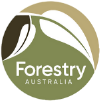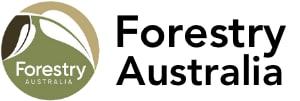
Open Letter: Great Koala National Park NSW
Published 17 March 2023
To the Hon. Chris Minns MP,
I am writing on behalf of Forestry Australia to initiate a positive discussion with you and a future NSW Labor Government about strategies to improve the conservation of koalas, which are endangered in NSW.
Forestry Australia is an independent professional association with over 1,000 members. Forestry is the science and craft of creating, managing, conserving, using and caring for forests, regardless of tenure. We acknowledge Traditional Owners, as Australia’s ‘first foresters’ and their long-term custodianship of Country. Our members are forest scientists, professionals, managers and growers working in all aspects of forest and natural resource management throughout Australia. We are apolitical and tenure neutral. We advocate for science-based forest management, and provide professional development to ensure balanced, integrated forested land use, as well as ecologically sustainable management that meets community expectations and environmental needs.
Forestry Australia welcomes Labor’s commitment to take concrete actions to improve the recovery of koalas in northern NSW and to do that in a consultative manner with local communities and key stakeholders, including the forestry industry. The koala is an iconic wildlife species and an important part of Australia’s biodiversity and, accordingly, we need to take a suite of actions to conserve and maintain healthy and sustainable populations. Forestry Australia’s members consider that that the proposed assessment process to create a new Great Koala National Park must be conducted carefully and holistically. Otherwise, the establishment of this National Park could lead to unintended consequences and may not be the most effective means of enhancing koala conservation.
Forestry Australia fully supports the critical role that well-managed National Parks can play in the conservation of Australia’s biodiversity. However, there is a public misperception that the only way to protect species is to create more conservation reserves. Forestry Australia’s view is that koala recovery can best be achieved through a landscape-wide approach to active management of these populations and their forest habitats across all land tenures. There is considerable evidence that the National Park estate is continuing to be degraded due to unnatural fire regimes, pests and diseases, and a lack of active management to mitigate their impacts. Forestry Australia considers that in most jurisdictions, including NSW, the system of National Parks is vastly under-funded, with relatively passive management, which constrains options to manage key threats at a landscape scale and can remove opportunities for Traditional Owner self-determination of culturally appropriate land management practices.
Forestry Australia notes the existing State Forests located between Kempsey and Grafton include many areas of regrowth and planted eucalypt trees, that provide the resources necessary to sustain some of Australia’s most sophisticated remaining value-adding hardwood timber processors and transmission pole producers. Given global recognition of the important roles of sustainable forest management and increasing substitution of wood products for greenhouse gas intensive products in meeting net zero emissions commitments, Forestry Australia considers it would be a perverse outcome if the Great Koala National Park initiative led to the closure of these forest industries.
Creating a Great Koala National Park alone will not reduce threats to koalas or forest ecosystems. There are many threats contributing to koala decline, including climate change related issues such as increased occurrence and extent of intense bushfires, disease, road kills and loss of habitat due to urbanisation and land clearing. Forestry Australia also notes the very significant decline of koala populations in the Pilliga forest in Central-West NSW following the conversion of State Forest to National Park, accompanied by the cessation of timber harvesting, resulting in a shift in vegetation composition. The subsequent decreases in koala habitat and food source have been compounded by climate change and bushfire impacts on the species in the area.
Forestry Australia draws your attention to the scientific evidence (examples attached) which shows that koalas can tolerate and perhaps even benefit from certain types of carefully managed and regulated habitat disturbance such as selective timber harvesting and low intensity fire. These active management tools can be used to strategically manage bushfire risks and enhance forest health and resilience more broadly, providing benefits to biodiversity and the community.
Finally, Forestry Australia considers there is much speculation, but few available data, on trends in koala populations, especially including the private forest estate. To ensure any changes to management practices are effective, support for long-term, strategic and tenure-blind monitoring and research programs will be essential.
As the only national professional association for forest science, growing and management, Forestry Australia stands ready to work with governments to find genuine solutions for the challenges facing koalas, and to improve the health and resilience of our forests.
We look forward to further dialogue on how Forestry Australia can assist the processes to secure the future for koalas in NSW, through science-based active forest management approaches.
Kind regards,
Dr. Michelle Freeman
President, Forestry Australia

